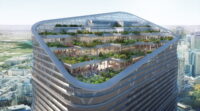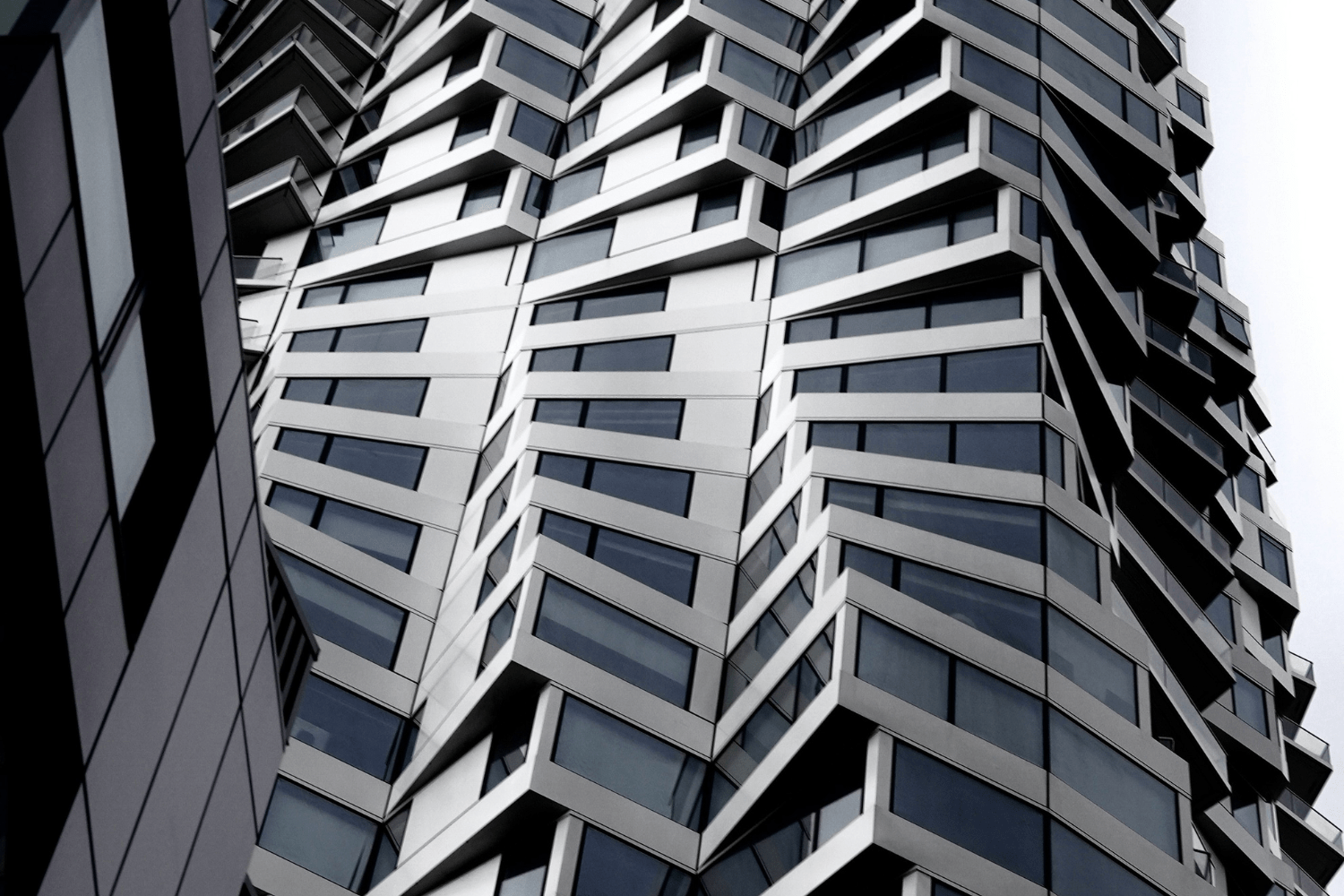- Home
- Articles
- Architectural Portfolio
- Architectral Presentation
- Inspirational Stories
- Architecture News
- Visualization
- BIM Industry
- Facade Design
- Parametric Design
- Career
- Landscape Architecture
- Construction
- Artificial Intelligence
- Sketching
- Design Softwares
- Diagrams
- Writing
- Architectural Tips
- Sustainability
- Courses
- Concept
- Technology
- History & Heritage
- Future of Architecture
- Guides & How-To
- Art & Culture
- Projects
- Interior Design
- Competitions
- Jobs
- Store
- Tools
- More
- Home
- Articles
- Architectural Portfolio
- Architectral Presentation
- Inspirational Stories
- Architecture News
- Visualization
- BIM Industry
- Facade Design
- Parametric Design
- Career
- Landscape Architecture
- Construction
- Artificial Intelligence
- Sketching
- Design Softwares
- Diagrams
- Writing
- Architectural Tips
- Sustainability
- Courses
- Concept
- Technology
- History & Heritage
- Future of Architecture
- Guides & How-To
- Art & Culture
- Projects
- Interior Design
- Competitions
- Jobs
- Store
- Tools
- More
Exploring New Trends in Sustainable Facade Design for Modern Architecture

Imagine the first time you witnessed the awe-inspiring Parthenon or the captivating Walt Disney Concert Hall. What left an indelible mark? It’s the facade, the face of the building that first greets your eyes. Today, we’re witnessing a revolution in facade design, driven by a desire to create not just visually stunning, but also sustainable and functional architecture.
In the world of modern exterior design, it’s no longer just about aesthetics. The focus has shifted towards blending iconic designs with practicality, and technology is playing a pivotal role in this shift. From ambient lighting enhancing even the most drab facades to the creation of designs that express unique styles, the future of facade design is here.
Join us as we delve into the fascinating world of new facade design trends for sustainable architecture. We’ll explore how architects and designers are redefining the boundaries of aesthetics and functionality, creating a future where buildings aren’t just structures, but meaningful elements of our lives.

Table of Contents
ToggleUnderstanding Sustainability in Architecture
The journey towards sustainability in architecture involves leveraging technology, innovative ideas, and various facets of design. Let’s break this down by looking at why sustainable design is crucial and how it’s shaping the future of facade engineering.
The Importance of Sustainable Design
Sustainable design holds immense importance in mitigating the environmental impacts of buildings. The built environment contributes to 30% of global greenhouse gas emissions and accounts for one-third of the global consumption of raw materials, energy, and water. Architects and designers have recognized this fact and are now using sustainable design strategies to alleviate pressing global issues such as climate change and global warming. Essentially, a sustainable home design reduces its environmental footprint through the use of eco-friendly materials, energy-efficient systems, and renewable energy sources.
Leveraging Technology for Sustainability
Progress in technology is shaping sustainable approaches in architectural design. Automated systems have emerged as a vital tool, capable of adjusting shading to maximize natural light while minimizing heat gain. Similarly, smart sensors find application in regulating water usage to avoid waste. Such technological applications make buildings comfortable for people and allow them to operate in a sustainable way.
Water Efficiency in Modern Architecture
As the ethos of conservation rises in prominence in modern architecture, concepts like water efficiency have become fundamental. It’s not just a desirable trait; it’s a requirement. Innovative water-saving solutions, like low-flush toilets, have become prevalent, reducing water usage significantly with each flush without compromising functionality. Moreover, greywater systems – recycling water from showers, sinks, and laundry – are on the rise. These systems ensure water conservation, thereby endorsing sustainability.
The Role of Facade Engineering in Sustainable Design
Facade engineering has evolved tremendously against the backdrop of sustainability. Driven by the rapid pace of technological advancements, new facade systems and materials have emerged. These innovations require careful evaluation to ensure they align with sustainability objectives. By understanding these advancements, architects and engineers can shape the architecture of the future to stay aligned with contemporary sustainability objectives. Facade engineering, thus, holds a vital role in sustainable design, transforming urban highrise environments into more livable, eco-friendly spaces.
With the unfolding architectural design trends, sustainable architecture is not just intelligently designed, but also operated systematically, setting new facade design trends for sustainable architecture in 2024 and beyond.

Exploring Sustainable and Eco-friendly Designs
As we venture further into the realm of facade design for sustainable architecture, we can’t overlook the rising prominence of green building practices, the integration of eco-friendly materials, and the implementation of energy-efficient technologies.
Embracing Green Building Practices
Modern architectural practices are increasingly turning towards sustainable solutions. One Central Park in Sydney is a brilliant example of this. With its double-skin facade and large-scale vertical garden, it embodies natural ventilation and greenery integration. Hundreds of skyscrapers worldwide now adopt such eco-friendly design principles that harmoniously coalesce with the surrounding environment, promoting biodiversity with green roofs and natural ventilation systems. This trend is partly driven by technology that provides alternative, sustainable ways of regulating a building’s internal environment, reducing reliance on artificial heating and cooling systems.
Integration of Eco-friendly Materials
The choice of material plays a pivotal role in creating sustainable and high-performance building facades. Timber, bamboo, recycled steel, and glass are some of the more popular choices, given their potential for recyclability and low environmental impact. They are not only strong and sturdy but also versatile, providing endless design possibilities. Innovatively, bioplastics and wood-plastic composites are finding their place in sustainable architecture. Creative interweaving of these materials with conventional ones like clay bricks builds environmentally-conscious facades while reducing the overall carbon footprint.
Implementation of Energy-efficient Technologies
The drive for sustainability is breeding a new era of technological advancement. Photovoltaic modules are now being integrated into metal curtain walls to capture and convert sunlight into electrical power, stamping a new level of energy efficiency on the building design. Furthermore, innovations like automated shading systems and smart sensors are emerging to regulate natural light and temperature, reducing the energy demand for artificial lighting and air conditioning. Energy-efficient technologies such as these are becoming a must-have in modern facade design, ensuring that buildings not only look impressive but also perform effectively while being kind to the environment.

Smart and Responsive Architecture
In the futuristic world of architecture, smart and responsive systems are making their way from the architect’s table to the city skylines. Such buildings not only redefine aesthetic standards but also lead the way in efficiency and sustainability. Let’s delve into how smart technologies are getting integrated into building facades.
- Intelligent Sensors: These tiny technological marvels monitor varied interior and exterior conditions—everything from temperature, light, humidity to air quality. In response to this data, the building systems adjust themselves accordingly, leading to optimized energy efficiency and user comfort.
- Data Analytics: Deep learning and AI algorithms process the data collected by the sensors. They predict trends and patterns, empowering architects and engineers to make informed adjustments to building operations, thereby reducing overall energy consumption and increasing sustainability.
- Automation Systems: Tying it all together, automation systems serve as the backbone of smart facades. They control lighting, heating, cooling, and ventilation systems based on the data from sensors and analytics. Consequently, they ensure real-time adaptation to changing conditions and also allow remote monitoring and control.
- Adaptive Facades: Smart technologies enable facades to change their properties in response to environmental conditions. For example, dynamic glazing technology in windows can modify the amount of sunlight that gets filtered into the building, thereby maintaining optimal light levels and minimizing heat gain.
- Energy-Generating Features: Some facades incorporate photovoltaic panels or wind turbines, transforming them from being mere elements of design into becoming active energy generators. This elevates the notion of sustainability in architecture to new heights by reducing reliance on non-renewable energy sources.
By implementing these smart technologies, architects are poised to redefine the way we experience built environments. The innovative façade designs contribute to the adaptability and responsiveness of a building, making it a dynamic entity deeply harmonized with its surroundings.

Unveiling Emerging Facade trends
Staying abreast of architectural trends, let’s explore some innovative and sustainable facade styles that are shaping future architectural designs.
Biophilic Facades
Embracing the essence of nature, biophilic facades integrate natural elements into architectural designs. By incorporating materials like wood and stone or including lush greenery, they aim to establish a deep connection between people and the natural world. Not just a treat to the eyes, biophilic facades improve indoor air quality by using plants that filter pollutants and release oxygen, promoting better physical health and mental wellbeing.
Smart Facades
With technology revolutionizing every field, why should architecture stay behind? Smart facades are a testament to this evolution. These incorporate solar panels and wind turbines into the facade, generating energy and creating an adaptive and intelligent building exterior. Technological advancements have also led to the development of self-healing concrete and thermochromatic glass, taking the smart aspect of these facades a notch higher.
Parametric Facades
Diving into the realm of complexity, parametric facades are designed using computer algorithms that generate intricate forms and patterns based on specific parameters. This technology allows architects to create visually striking designs that are also sustainable. By effectively responding to environmental conditions, parametric facades help in enhancing the overall energy efficiency of the building.
Kinetic Facades
Adding a dynamic element to architectural design, kinetic facades move and change in response to the surrounding environment. This could mean adjusting to daylight exposure, wind direction, or temperature changes. The constant adaptation not only gives these buildings a life of their own but also contributes to energy efficiency and user comfort.
Zero-Carbon Facades
In the quest to combat climate change, zero-carbon facades have emerged as game-changers. These designs aim to minimize carbon emissions by utilizing energy-efficient materials, technologies and design tactics. The result? Buildings that are not only visually appealing but also leave zero carbon footprints, heralding a significant stride towards a more sustainable future.
3D Facades
Welcome to the world of depth and dimension! 3D Facades give an extra edge to the building’s external look. The heightened visual appeal comes from the intriguing shadows and depths that these facades create. But, there’s more than meets the eye – they can help in reducing energy consumption by reacting to sunlight and heat exposure, an integration of aesthetics with smart, sustainable architecture.

Examples of New Facade Design Trends
Innovative design processes and technologies are continuously reimagining the scope of facade design in sustainable architecture. Let’s explore a few of these trends that are pushing the boundaries of sustainable architectural design.
Case Studies of Successful Sustainable Architecture
- Double-Skin Facades (DSFs): DSFs consist of two layers of material separated by a gap. This reduces heat transfer, leading to higher energy efficiency. For instance, the gap can range from 0.2 m to 2 m, significantly impacting the facade’s thermal performance.
- Integrating Photovoltaic Modules: Photovoltaic modules are being seamlessly integrated into metal curtain walls to harness solar energy. This was evidenced in various architecture presentations at the first IEEE World Conference on Photovoltaic Energy Conversion.
- Incorporating Façade Testing: Façade testing against environmental loads such as water and air infiltration is essential for sustainability. Complying with AS4284:2008 testing standard ensures façades are designed for durability and performance.
- Smart Façades: The future belongs to smart facades that adjust and respond to the environment. Smart technologies like sensors, data analytics, and automation systems optimize energy use and improve user comfort.
- Biophilic Facades: Connecting people with nature is another major focus in facade design. Biophilic facades featuring green roofs and natural ventilation systems enhance well-being and contribute to sustainability.
- Kinetic Facades: Kinetic facades move or adapt based on the changing environmental conditions, enhancing energy efficiency.
- Parametric Facades: Parametric design approaches are reshaping facade design. Through algorithms, these facades can optimize shape, size, and overall configuration for better wind resistance, lighting conditions, and thermal performance.
- Lighting Enhancements in Facades: Proper illumination can dramatically impact a building’s aesthetic appeal. Ambient lighting is now prioritized, making even a drab facade bright and significant.
Remember, sustainable design isn’t just a matter of aesthetics. With careful consideration of materials, testing, and design, architects can create sustainable facades that make our built environments more eco-friendly.
Future Implications
As our understanding of sustainable architecture evolves, we can anticipate a shift in facade design trends. These trends will not only address aesthetics but also contribute to the practicality and eco-friendliness of future architectural creations.
- Embracing Energy Efficiency: Architectural advancements will continue to prioritize energy efficiency. The increase in double-skin facades and integrating photovoltaic modules exemplify this trend. These designs contribute significantly to reducing energy consumption and promoting sustainability.
- Technological Advancements: Integrating smart technology with facade design is another trend to look out for. Sensors and automation systems will become ubiquitous in architectural designs, contributing to efficient buildings that regulate their own energy consumption.
- Material Innovations: Changes in the material used for facades are also on the horizon. Stone cladding, having a low thermal conductivity of 0.4 W/mK and the ability to reduce cooling loads by 4% compared to aluminium panels and 15% compared to plaster systems, is a potentially promising material. It is likely that such materials will gain more acceptance in future designs.
- Holistic Design Approach: Future design trends will consider the aesthetics, energy efficiency, cost, and safety of the façade materials. Given precautionary measures for denting and fire safety, the overall design approach will evolve to meet these critical factors.
- Lighting Enhancements: The use of outdoor and ambient lighting on facades is predicted to increase, enhancing any home exterior significantly. A well-lit facade can turn even the most drab exterior into an inviting and visually appealing sight.
Remember, while considering these future trends, it’s essential to maintain a unique style that expresses your sense of aesthetics and align it with the broader scope of sustainability. The journey towards sustainable architecture isn’t just about adopting new trends, but also about creating a more sustainable future. Stay tuned and follow us for the latest updates on sustainable architectural design trends.

Conclusion
- Embracing Sustainability: More than ever, it’s crucial that architects commit to sustainability in their facade designs. This means thoughtfully integrating green building practices and choosing eco-friendly materials. The goal is to create buildings that have a lesser impact on the environment, yet still, retain a unique aesthetic that aligns to the contemporary built environment.
- Adopting Biophilic Design Principles: Biophilic design promotes the integration of nature into architectural design. As we’ve noted earlier, developments like One Central Park in Sydney are sterling examples of biophilic facades. Biophilic designs can improve quality of life and well-being while enhancing environmental sustainability.
- Leveraging Groundbreaking Technologies: The future of facade design will be significantly shaped by the latest breakthroughs in technology. This means tapping into advancements in sensors, automation systems, and energy-generating technologies to incorporate smart facades. These aren’t just trendy—they’re efficient, eco-friendly, and are the way forward in architectural design.
- Enhancing Facades with Outdoor Lighting: It’s often the small touches that make a big difference in design. In modern architectures, aesthetic appeal of facades is dramatically improved with strategic ambient lighting. Even the most Spartan facades can be brought to life with the right lighting design, proving how crucial these details are in architectural design.
- Leading the Future Landscape: Architects and designers who fully grasp and implement these trends into their designs will likely shape the facade design landscape for the next decade. Given the increasing importance of sustainability, the promise of groundbreaking technologies, and the spread of smart solutions, the future of facades is indeed brimming with potential.
By staying abreast of these design elements, we have the opportunity to be key players in a greener, smarter, and more aesthetically-pleasing built environment.
Submit your architectural projects
Follow these steps for submission your project. Submission FormLatest Posts
How Facades Tell Cultural Stories
How facades tell cultural stories—decode symbols, materials, and climate cues with regional...
Top 10 Examples of Dynamic Facade Designs Around the World
Dynamic facades are transforming contemporary architecture with systems that move, react, and...
8 Trends in Dynamic Facade Design You Need to Know
Dynamic façades are reshaping contemporary architecture by responding to climate, light, and...
Transform Ordinary Facades Into Striking Designs With These Key Upgrades
When it comes to enhancing the appearance of a home, few aspects...












Leave a comment